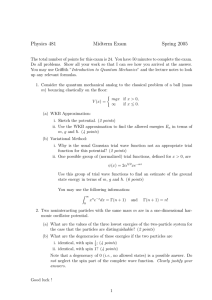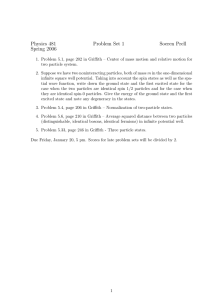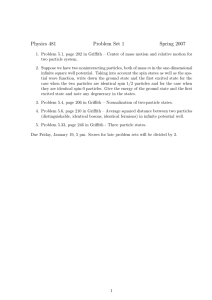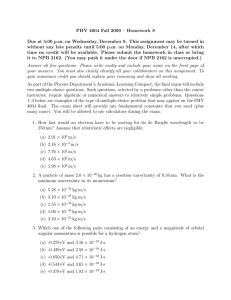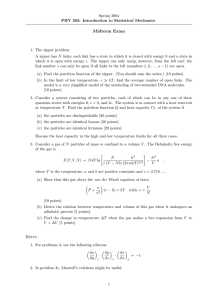Quantum Mechanics Tutorial: Antisymmetric States & Bosons
advertisement
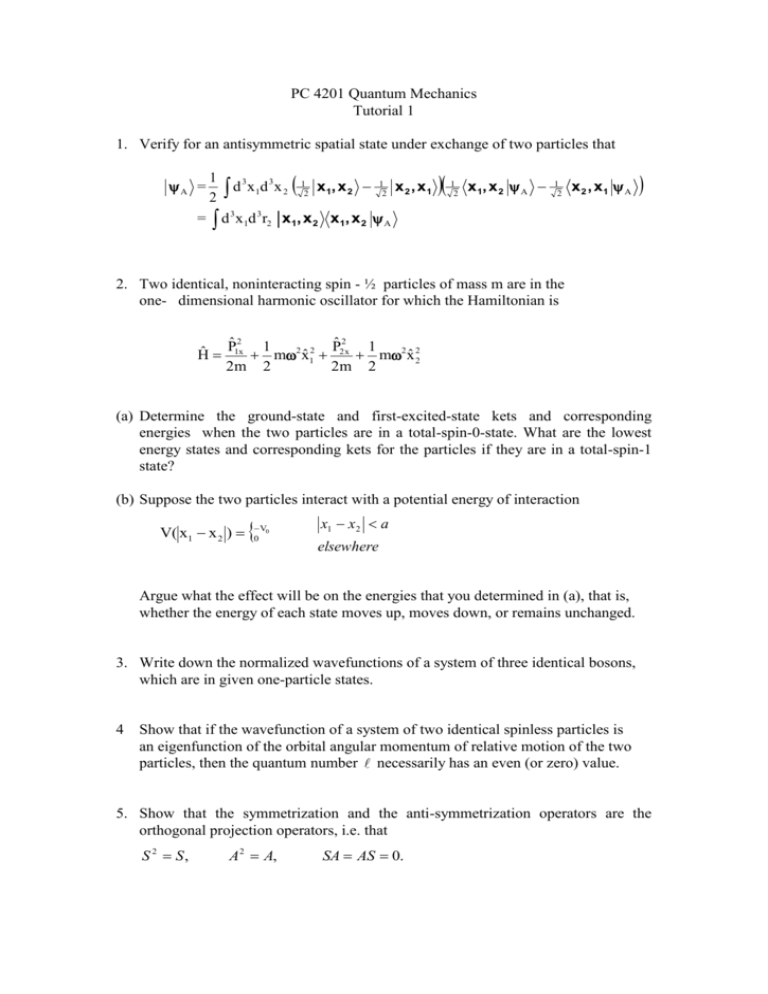
PC 4201 Quantum Mechanics Tutorial 1 1. Verify for an antisymmetric spatial state under exchange of two particles that A = 1 2 d x d x 3 3 1 2 1 2 x 1, x 2 1 2 x 2 , x1 1 2 x 1, x 2 A 1 2 x 2 , x1 A = d 3 x 1d 3 r2 x1, x 2 x1, x 2 A 2. Two identical, noninteracting spin - ½ particles of mass m are in the one- dimensional harmonic oscillator for which the Hamiltonian is P̂12x 1 P̂22x 1 2 2 Ĥ m x̂1 m2 x̂ 22 2m 2 2m 2 (a) Determine the ground-state and first-excited-state kets and corresponding energies when the two particles are in a total-spin-0-state. What are the lowest energy states and corresponding kets for the particles if they are in a total-spin-1 state? (b) Suppose the two particles interact with a potential energy of interaction V( x1 x 2 ) V0 0 x1 x 2 a elsewhere Argue what the effect will be on the energies that you determined in (a), that is, whether the energy of each state moves up, moves down, or remains unchanged. 3. Write down the normalized wavefunctions of a system of three identical bosons, which are in given one-particle states. 4 Show that if the wavefunction of a system of two identical spinless particles is an eigenfunction of the orbital angular momentum of relative motion of the two particles, then the quantum number necessarily has an even (or zero) value. 5. Show that the symmetrization and the anti-symmetrization operators are the orthogonal projection operators, i.e. that S 2 S, A 2 A, SA AS 0.
